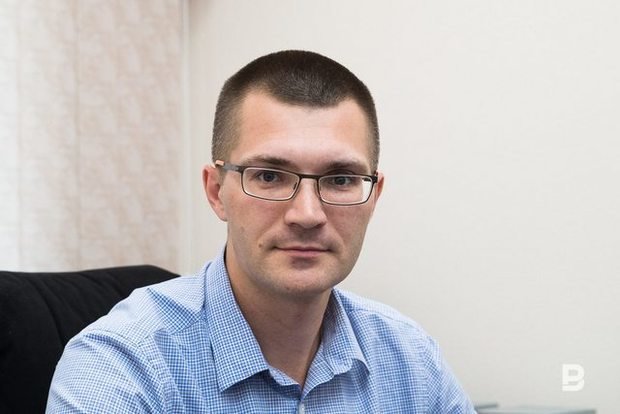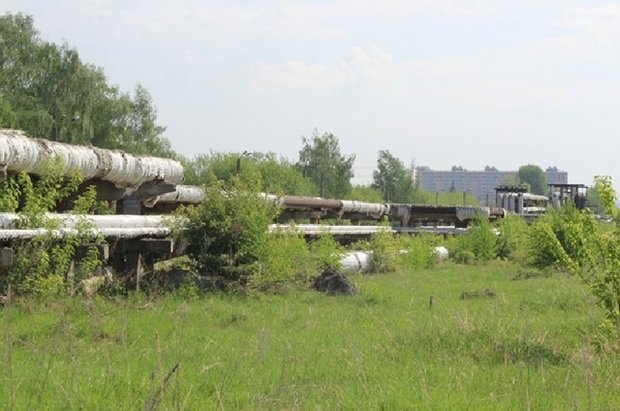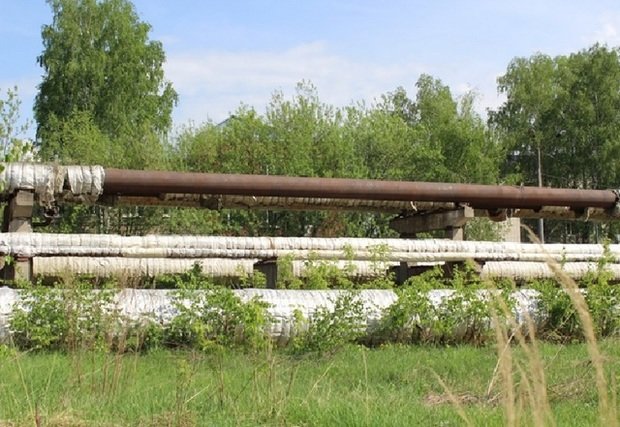''Heat Supply Scheme of Kazan needs be radically reformed''
Energy sector expert about changes in the heat supply market
The changes made to the federal law 'On Heat Supply' came into force one year ago. The innovations presuppose a shift to 'an alternative boiler' thermal energy pricing model. The population of Kazan will already feel the changes in the near future. The new project's key role is given to the united heat supply organisation (UHSO), which will become a monopolist in its heat supply zone. Realnoe Vremya talked with Director of the Heating Energy Sales Department of TGC-16 PKSC Fyodor Kosurov about what a structure it was, its powers and how its responsibility would be defined.
Changes in the legislation on heat supply
Mr Kosurov, what the UHSO is? What are the powers of this structure?
The United Heat Supply Organisation is a guaranteed thermal energy supplier for the consumers located in its zone of operation. The UHSO is responsible for quality and uninterrupted supply of the resource and is also responsible for technological violations. The UHSO status is given to the cities with a population of 500,000 people and more, for instance, Kazan if the Heat Supply Scheme is approved by the Russian Ministry of Energy. Or if it's cities with a population of less than 500,000 people, it's approved by the city's executive committee.
Every UHSO's heat supply scheme defines a zone of operation. Any consumer whose heat consuming plants are located in such a zone can turn to the UHSO to sign a heat supply agreement. The organisation, in turn, must sign an agreement with any consumer located in its zone of operation who turned to it.
According to the Article 23.8. Clause 2 No. 190 FL 'On Heat Supply', when prices of the heat supply zone are known, the consumer will must buy thermal energy only from the UHSO located in its zone of operation.
What new obligations will the UHSOs have after the reform?
The changes introduced to the federal law 'On Heat Supply' came into force on 1 July 2018. The novelties mean a shift to a new thermal energy pricing model – the 'alternative boiler' method. The shift to this calculation method is possible at the UHSO and the executive committee's initiative after the Russian government's approval.
Its gist is simple: heat for the end consumer mustn't exceed the 'alternative boiler' tariff, that's to say, heat tariff mustn't be more than the tariff on heat generated in a boiler without depending on its production method, transportation and losses. It's an important decision because today heat tariffs in many centralised heat supply systems in Russia are higher than the price for heat that would be generated in the consumer's own boiler. This is why boilers have gained popularity when consumers switch to their own heat resources.

Today heat tariffs in many centralised heat supply systems in Russia are higher than the price for heat that would be generated in the consumer's own boiler
According to the Clause 2 No. 190 FL 'On Heat Supply', the united heat supply organisation will be the designer of the heat supply system for its zone of operation in the pricing zone. The UHSO is also obliged to take measures to construct, reconstruct and update heat supply facilities that are needed to develop, improve reliability and energy efficiency of the heat supply system. An agreement on heat supply scheme envisaged in the Clause 15 Article 23.8. No. 190 FL 'On Heat Supply' will be a source of leverage.
Apart from what was enumerated above, the UHSO is also responsible for meeting supplied thermal energy's quality parameters and allowed breaks in heat supply. The maximum allowed break in heat supply mustn't exceed 14 days a year.
What are the criteria a heat supply organisation needs to become a UHSO?
The criteria to identify a UHSO are clearly established by the Clause 7 of the government's regulation No. 808 as from 08.08.2012 'On Organisation of Heat Supply in the Russian Federation and Making Changes to Some Acts of the Government of the Russian Federation' such as:
- to possess as proprietary or on another legal basis thermal energy sources with the highest operational thermal capacity and (or) heat systems with the highest volume on the border of the zone of operation of the united heat supply organisation;
- equity size;
- capability to provide the highest reliability of heat supply in the related heat supply system.
''Kazan needs to develop heat systems''
Speaking about thermal energy supply to Kazan, what UHSOs do we have? How are zones of operation distributed among them?
Now 43 UHSOs approved by the Heat Supply Scheme operate in Kazan. The three biggest UHSOs (Tatenergo JSC UHSO-1, TGC-16 PJSC UHSO-2, Kazenergo JSC UHSO-3) provide thermal energy to the population of Kazan, the others were created in departmental and industrial boilers serving both for their own needs and to provide the population with thermal energy. Heat load distribution between the operating UHSOs is defined by the Heat Supply Scheme where thermal energy generation volumes from heat sources and thermal energy purchase volumes in the UHSO's hot water from heat supply organisations are defined.
However, in experts' opinion, Kazan's heat supply system isn't optimal. It needs to be radically reformed. The Kazan executive committee also agreed with it. Different options to reform Kazan's heat supply system were considered a long time ago already. But there was light at the end of the tunnel when the new standards in heat supply were adopted, the concept of UHSO was introduced and the transition of heat pricing to the 'alternative boiler' method was declared. And as it's said, it's not the light of an approaching train, it's a real way of getting rid of that negative trend the centralised heat supply system is in.

In experts' opinion, Kazan's heat supply system isn't optimal. It needs to be radically reformed
TGC-16 PJSC's specialists and the sector's experts think a really working mechanism can be created in Kazan. And the centralised heat supply system will be able to develop and increase its efficiency but without creating a heavy burden for consumers and the population. The offer's gist is to create a united heat supply organisation on the basis of heat system assets, which are possessed by Kazan Heat Network Company PJSC at the moment, and the assets of Kazenergo JSC. This organisation will be independent on big thermal energy generators such as Tatenergo JSC and TGC-16 PJSC and will have a vested interest in optimising its heat system by decommissioning ineffective boilers and maximising loads of sources with combined heat and electrical energy generation with the lowest tariff. The company created this way will be able to increase its profitability even without raising the end tariff. In this situation, thermal energy generators will have to optimise their costs to offer their products to the consumer – the cheapest heat. Nowadays the electrical energy market operates so, where power plants compete for load in the economy regime.
Such a UHSO must be supervised by Kazan's executive committee to consider the citizens' interest, not the interest of certain companies.
What will it give?
A reduction of costs to purchase thermal energy from sources will free organisations from additional money, which will be designed to raise the quality to service the heating system, while it's very necessary in the current conditions. To confirm my argument I can give an example of the state of the heat insulation of the heat pipe No. 13, which conducts heat from the Kazan CHPP-3 with Tatenergo JSC's heat systems. In this situation, the UHSO just won't have a chance and the necessity to augment the end tariff by means of excessive heat losses.

In my opinion, the development of heating systems will allow to increase the load of combined generation sources more. But there is a question: why precisely combined generation sources? The answer is obvious: its heat is cheaper than that of boilers, as two products are made when one kilogramme of fuel burns: heat and electrical energy. And production costs are divided between them. I will put an example. Our specialists have recently been in Düsseldorf, in one of the latest and effective combined power plants Fortuna, which, by the way, belongs to a private energy company. So this power plant has an energy unit with a capacity of more than 600 MW with steam and gas turbines and electric energy conversion efficiency equal to about 60%. Moreover, this energy unit generates heat for the city's centralised heat supply. But the most interesting thing is that in accordance with local approaches, the heat generated by the combined power plant is equal to the heat generated by renewable sources! This happens because such an approach enables to considerably improve the ecological situation in the suburbs of the city and simultaneously reduce consumers' costs. In Kazan, the situation, unfortunately, is reverse, more consumers refuse the centralised heat supply system, which, in turn, raises the tariff.

The development of the united heat supply system with a simultaneous use of a colossal reserve of combined generation, which the city's CHP has now, enables to restrain tariffs on both heat and electrical energy from growing. An adequate pricing policy also means favourable conditions for developers to connect with heat systems, which will reduce the continuous refusal from the centralised heat supply in favour of individual thermal energy sources.
As a result, a simple organisational decision will allow, as I already noted above, to create a fair tariff on thermal energy for the end consumer, optimally load thermal energy sources according to a competitive principle, increase the reliability of heat supply, create mechanisms to develop the city's heat systems. It's good Kazan's officials started to think of this issue and are ready to support the approach we had offered.
''Thermal energy price in Kazan according to the 'alternative boiler' method will be much higher than the existing tariff''
If I understand correctly, according to the reform, the monopoly of the UHSO only rises despite possible advantages you told about. So can a monopolist in the market raise the price and change the utility bill at any moment?
You're right, the monopoly of the UHSO only grows in heat supply pricing zones. If earlier the UHSO was obliged to sign a heat supply agreement with every consumer who turned to it. After the reform, the consumer becomes obliged to purchase heat only from the UHSO. This novelty is explained in the Article 23.8. Clause 2 No. 190 FL 'On Heat Supply'. As for tariff, every heat supply system in pricing zones will have the highest price level (it's established by tariff committee) that the UHSO can sell thermal energy for. The higher price for thermal energy is calculated according to the 'alternative boiler' method. Moreover, the price can be both higher and lower than the tariff established today. By our preliminary estimates, thermal energy price in Kazan according to the 'alternative boiler' method will be much higher than the existing tariff. In the regional with the highest price according to the 'alternative boiler' method is more than the existing tariff, there can be a gradual increase in thermal energy price to the level of the alternative boiler.
What responsibility measures are designed for the UHSO if the structure starts to abuse its domination?
The UHSO is responsible for the quality of supplied thermal energy and rise in allowed breaks in heat supply by reducing the thermal energy bill for the population. If the structure is violated its obligations, the organisation can lose the status of UHSO. For example, if it fails to timely pay for thermal energy to energy supply organisations and for services to transport thermal energy to heat system organisations.
Does the UHSO have the right to decide what a supplier to buy from and how much heat to purchase? Or any there any certain standards of purchases explained in documents?
The decision about thermal energy distribution to heat sources is reflected in the city's Heat Supply Scheme. All tariff consequences are considered there in case of an insufficient load of some heat source. The heat supply system is the core document that must be strictly fulfilled by the UHSO.
TGC-16 is the UHSO-2. The company got the status three years ago. What did this role give to TGC-16? What has changed since 2015? Did you manage to sign new agreements? How have tariffs changed after granting the status of UHSO?
TGC-16 sold thermal energy in Kazan to the consumers connected to the Kazan CHPP-3's collectors before 2015. Granting the status of UHSO-2 allowed us to be the only thermal energy supplier for Rainbow RC socially important project and several new industrial consumers.
After obtaining the status of UHSO-2, TGC-16 got tariffs for end consumers who use thermal energy from heat systems where the heat comes from the Kazan CHPP-3. Today the company's branch, Kazan CHPP-3, is the most effective big heat source of Kazan thanks to which it became possible to get lower end tariffs for the population of the new district Rainbow RC in comparison with Tatenergo JSC USHO-1's tariff, the difference is 11% per Gcal today.
Are you going to support the lower end tariff for Rainbow RC in comparison with the tariffs in the other part of Kazan?
This tariff consists of two components: the tariff in the collector of the Kazan CHPP-3 and the tariff on thermal energy transportation to the end consumer. The collector's tariff depends on the thermal energy volume generated by the plant. TGC-16 PJSC actively conserves thermal energy generation volumes from the Kazan CHPP-3 in accordance with the city's Heat Supply Scheme. To conserve tariffs at today's level, it's necessary to comply with the Heat Supply Scheme of Kazan concerning thermal energy volumes purchased from the KCHPP-3. And to reduce the end tariff, it's necessary to increase the load of the CHPP-3 to installed indicators, and, as I already said, to solve the problem of creation of independent heat supply organisation in Kazan.